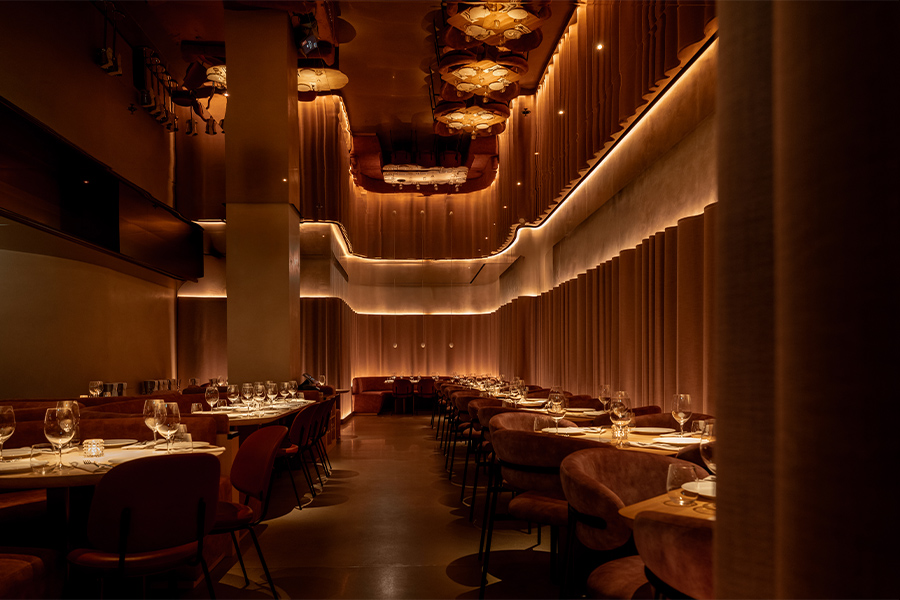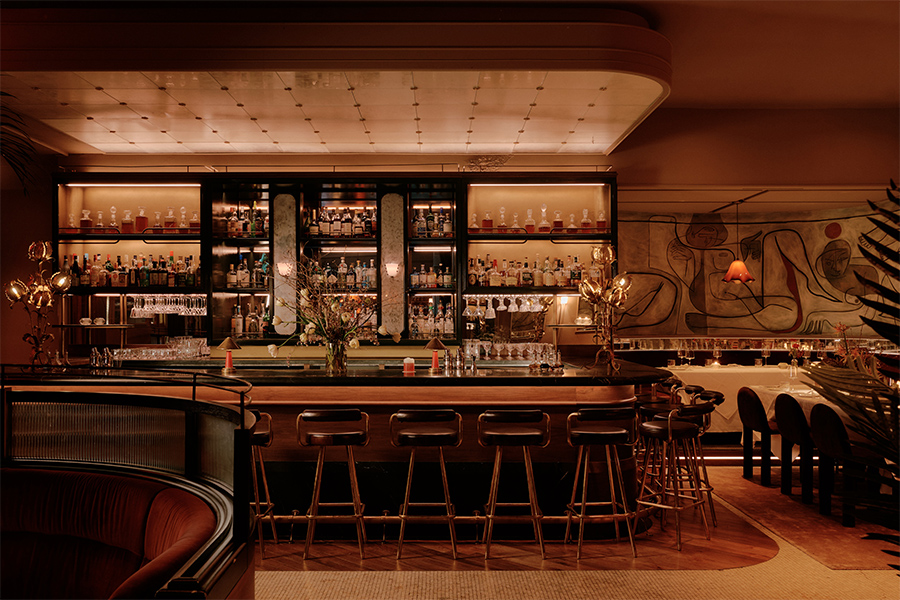Designer and owner Justin Cucci veered away from set-in-stone themes when it came to his two eclectic Denver restaurants and their backstories. Set in a former gas station and a mortuary, respectively, Root Down and Linger honor their histories with a touch of the designer’s mid-century style.

Built in the 1950s, the previous gas station that houses Root Down came together piece by piece. “The way I design is almost organic,” says Cucci. A collector by nature, the designer gathered reclaimed or intriguing materials to give the restaurant an original look. The host stand comes from the gas station’s original air compressor. The same material that is used on basketball courts swathes the floors and complements a 1960s bowling lane, which is used for the bar top.

“To me, the reclaimed basketball floor, the reclaimed bar top, the can lids, and the host stand gets me really excited to reuse things,” Cucci says. “It’s just a lot of things from the ’60s that people have forgotten about.” As well as a wall of oil tin can lids and 1950s scales in the bathrooms, the space holds a wall of 40 rotary phones-the solution to a design problem. “We had this exit that was really ugly, and so we just put these phones on a wall to cover the exit wall up,” explains Cucci. A mix of art, from local paintings to personal works, adds to the restaurant’s funky aesthetic.

“I knew I wanted to honor the history, but I also didn’t want to overdo it,” Cucci says. “In Linger, for example, I didn’t want to make it like a mortuary-themed restaurant.” Instead, he took a cue from the 1971 classic film, Harold and Maude. Linger’s dark dining area references the 17-year-old Harold’s suicidal nature, while the bar’s fun appeal recalls 80-year-old Maude’s obsession with life. “For me the idea of dealing with death brought to mind these two characters, who influenced the design and feel,” Cucci explains.

Hints of the building’s former occupation show up in touches like the wine list, which is printed on old medical charts. The water bottles resemble embalming bottles, and a collection of funeral fans lies behind the host stand, which is actually an old church pew. “Most of those things are really there because, just by the time we’re ready to install it, there’s that idea or a product has come out that we can use and almost always it’s a reclaimed or repurposed product,” says Cucci.

Along with a bar made of luminescent Lite-Bright toys, the restaurant’s “Maude” side includes 1960s floral wallpaper in the private dining room, and boxcar tile flooring. “We had way more fun light fixtures in that Maude building as well, where as in the main dining area we have no light fixtures, so it’s really minimalist and almost stark,” Cucci explains. Rebuilt with LEDs, air conditioner diffusers now serve as industrial-like chandeliers in the bar.

Atop the restaurant, the mortuary’s original sign shines out the former owners’ name “Olinger,” now reading “Linger,” in flashy mid-century fashion. A lime green 1935 RV that Cucci originally bought to travel in now houses the rooftop bar. “Every time I go up there, I think ‘this is just too cool,’ because they’re two totally different things from different eras that should not be there-there should not be an RV on the roof, but it works,” Cucci says. On the original sign where it once read “Mortuaries,” now boasts the word “Eatuaries.”

“There are things in these designs that don’t necessarily correlate in terms of a theme or strategy,” says Cucci, “but to me the art of it is how you put all these disparate things together and make them work as one.”


